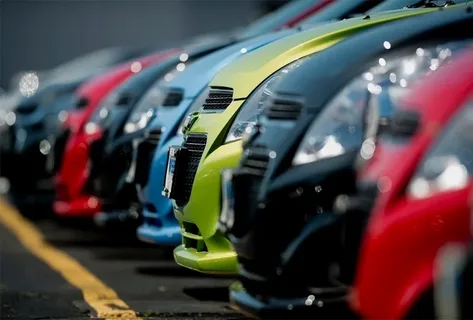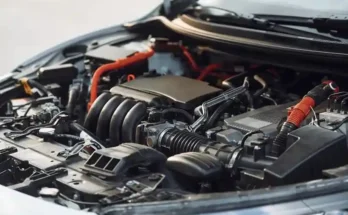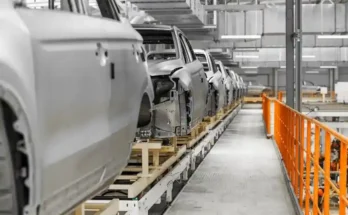Few inventions have reshaped the world like the automobile. It isn’t just a machine—it’s a symbol of freedom, progress, and innovation. From horse-drawn carriages to self-driving electric marvels, the automobile has undergone a spectacular evolution. And it’s still accelerating forward.
We’ll cruise through the history, examine the current landscape, and glimpse into the future of automobiles, where design meets intelligence and sustainability steers the wheel.
A Brief History of Automobiles:
Long before Tesla and turbochargers, the automobile’s roots were planted in the age of steam. The late 18th century saw the emergence of steam-powered vehicles, often clunky and slow. Then came Karl Benz in 1885, introducing what is considered the first modern automobile—a gas-powered three-wheeler. That changed everything.
This moment marked the start of a revolution. By the early 20th century, Henry Ford would push the envelope further with mass production techniques, bringing cars to the masses. The Model T didn’t just transform transportation; it transformed society.
The mid-20th century was a romantic era for the automobile. Cars were not just functional—they were rolling works of art. Think chrome detailing, tailfins, and powerful V8 engines. The 1950s and 60s gave rise to muscle cars in America, elegant roadsters in Europe, and a culture that worshipped speed and style.
Driving became an experience, and the car became an identity.
Automobiles in a Connected World:
-
Beyond Transportation
Modern automobiles are no longer just about going from A to B. Today’s vehicles are intelligent ecosystems on wheels. Equipped with GPS, voice assistants, autonomous features, and real-time diagnostics, cars now understand our preferences better than ever before.
Advanced Driver Assistance Systems (ADAS) have become commonplace. From adaptive cruise control to lane-keeping assistance, technology is transforming how we drive. Safety has drastically improved, and convenience has reached new heights.
-
The Rise of Electric Vehicles (EVs)
Electric vehicles are more than a trend—they’re a revolution. Companies like Tesla, Rivian, and legacy automakers such as Ford and GM are shifting their focus to electric mobility. This isn’t just about eco-consciousness. EVs offer quiet rides, instant torque, and fewer maintenance headaches.
Charging networks are expanding, battery technology is evolving, and even governments are incentivizing the switch. The engine’s roar is slowly giving way to a digital hum.
-
Design Meets Sustainability
Today’s car designs don’t just chase beauty—they chase efficiency. Aerodynamics, lightweight materials, and minimalist interiors are shaping vehicles for both aesthetics and environmental responsibility. The automobile of today is not just smart; it’s green and stylish.
Imagining the Future of Automobiles:
-
Autonomous Vehicles: Hands-Free Horizons
Perhaps the most transformative idea on the horizon is full autonomy. Imagine stepping into a car with no steering wheel, where AI navigates traffic, avoids hazards, and drops you off while you check your email or sip coffee.
Companies like Waymo, Apple, and others are racing to perfect self-driving tech. It’s a complex challenge, involving ethics, infrastructure, and legislation, but it promises to redefine urban living and road safety.
-
Cars That Talk to Each Other
Vehicle-to-Everything (V2X) communication will soon allow cars to “talk” to one another, to traffic lights, to the very infrastructure of cities. This networked intelligence could dramatically reduce accidents and congestion, making commutes faster and safer.
The day when your car knows about the accident five miles ahead—before your eyes see the flashing lights—is closer than we think.
-
Hyper-Personalization and AI Integration
Tomorrow’s automobiles will be deeply personal. Think facial recognition for ignition, AI that curates your in-car music and lighting based on mood, or seats that adjust to your posture and stress levels. The car will become an extension of your digital life, seamlessly integrating with your smartphone, smartwatch, and even your smart home.
The driver won’t just control the car—the car will understand the driver.
Culture and Cars:
-
More Than a Machine
Cars have always been tied to identity. From James Dean’s Porsche to Dominic Toretto’s Dodge Charger, automobiles play central roles in pop culture and personal expression. Even in the age of Uber and ride-sharing, the allure of owning a vehicle remains strong.
In many parts of the world, your car says something about you—your taste, your lifestyle, your priorities. Whether it’s a rugged SUV, a zippy city car, or a sleek electric coupe, the automobile still has emotional resonance.
-
Car Meets and Online Communities
Interestingly, the love affair with automobiles has also gone digital. Enthusiasts gather not only in parking lots but on forums, YouTube channels, and virtual car shows. Restoration videos, performance mods, and concept car reviews draw millions of views, proving that this cultural fascination isn’t going away—it’s just evolving.
The Challenges on the Road Ahead:
As electric and autonomous vehicles gain traction, cities need to catch up. Charging stations, smart traffic systems, and 5G networks must become as ubiquitous as gas stations. Without infrastructure, innovation stalls.
Policymakers, engineers, and designers will have to collaborate like never before to build cities that can support this new era of mobility.
What happens when a self-driving car must make a life-and-death decision? Should it prioritize its passenger’s safety or the pedestrian in the crosswalk? These ethical dilemmas aren’t theoretical—they’re very real and demand immediate attention.
AI in automobiles must be as ethically sound as it is technically brilliant. That’s the only way forward.
Conclusion:
For a machine that’s been around for over a century, the automobile continues to surprise us. From the dusty roads of yesteryear to the digital highways of tomorrow, the journey of the automobile is a mirror to human ambition.
We’ve built machines that go faster, think smarter, and pollute less. And we’re not done yet.
The road ahead promises not just new destinations, but entirely new ways of getting there. Buckle up—the future of the automobile is nothing short of extraordinary.




